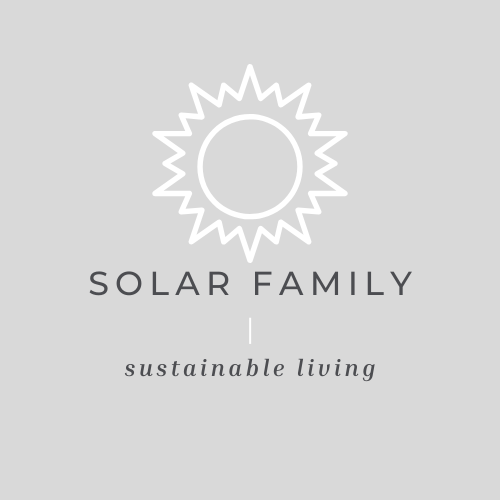


The system is composed of 4 -335 watt, 72 celled solar modules. Using micro –inverters, power is converted from DC to AC on the roof. There are no batteries or backup, it is strictly a grid tied system that uses the power immediately and any extra is sold back into the grid. We have designed or system so that it can easily be expanded. Our hope is that by next year we will have 28 panels on our roof!
I will be posting weekly blogs with updates about our system and general information about a solar set up. Posts will be in understandable language so that followers can learn about a solar set up without the solar jargon! My blog will also include tips on how to live sustainably. For example, gardening, recycling, buying local, etc.
I hope you all enjoyed my first ever blog! Please contact me if you have any questions. I have included the links to Riverside Energy if you want to check out their web page, Instagram or Facebook.
Love, light and laughter to you and yours,
The Solar Family

Our journey as a Solar Family started seven years ago; however, our Solar Home only just started this April (2020). We are so excited to see how much our system produces! For people who are not familiar with solar systems, I have provided some information and relevant links to their sources.
Solar power is energy from the sun that is converted into thermal or electrical energy. Solar energy is the cleanest and most abundant renewable energy source available. (Solar Energy Industries Association)
The key advantage of solar power systems is that they help reduce pollution from power generation. By contrast, burning fuels for energy produces pollutants such as particulate matter, Sulphur dioxide (SO2), carbon dioxide (CO2) and hazardous waste.
The chief disadvantages are low energy density and intermittency.
Energy density refers to the amount of potential energy a given amount of fuel contains. No technology can convert all the primary energy in a fuel into usable energy. Fossil fuels have very high energy density. They produce a lot of usable energy, even if the conversion is inefficient. Solar energy has relatively low energy density, which conversion reduces further. The least efficient solar conversion technologies are those that produce electricity. Those that convert it into thermal energy are more efficient.
Since sunlight is intermittent, solar power cannot be generated as consistently and predictably as power from other fuel sources. (Canadian Encyclopedia)
The primary benefit of solar generation is that it emits no pollutants or GHGs; However, some GHGs are released during the production, transportation, and assembly of PV cells. Using land for solar farms also raises concerns about land degradation and habitat impacts. Finally, solar panels can create waste when they become defunct, as few places recycle old solar panels. (Canadian Energy Regulator)
As mentioned in my first blog, our system is composed of 4 -335 watt, 72 celled solar modules. It also comes with amazing app for Android or Apple. Here are some of the screenshots from today’s solar energy capture.
I hope that my second blog has captivated your interest and keeps you wanting to learn more about solar energy! My next blog will be up soon! Possibly about how I reduce my environmental impact!
Love, light and laughter to you and yours,
The Solar Family

I hope you liked our last blog! (The Solar Family) Today’s blog will have slightly different content. I would like to talk about how I am reducing my carbon footprint and how to live more green and sustainably!
[ suh-stey-nuh-bil-i-tee ]
________________________________________noun
The ability to be sustained, supported, upheld, or confirmed.
Environmental Science. the quality of not being harmful to the environment or depleting natural resources, and thereby supporting long-term ecological balance (Dictionary).
We as a western nation have become a one-time use society. We use something once, then we throw it away. Society is now realizing that this is not ecologically viable. There are so many resources out there to teach us how we can live more sustainably, so we can leave this beautiful earth for many more generations to come.
I have included a link to a great website for you to look at if you are interested in reducing your carbon footprint Global Stewards.
I am not going to lie and say that I live green all the time. I drive an SUV, I do buy plastic packaged items, I have two children and we live in a fair sized home. However, it’s not one person doing everything that makes a difference its many people doing small things that do!
Love, light and laughter to you and yours,
The Solar Family